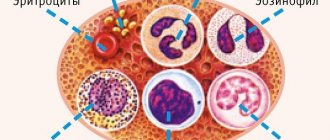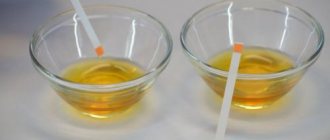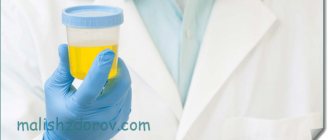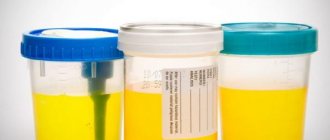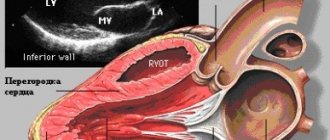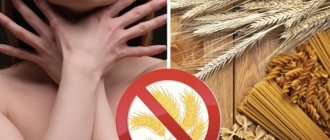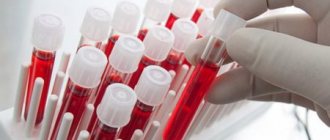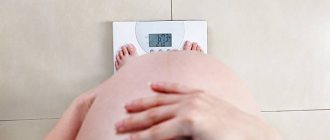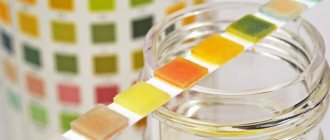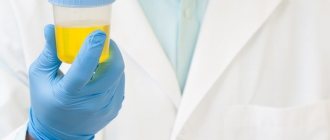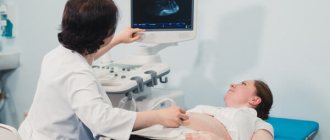In the article you will read what indicators are included in a general urine analysis, what are the reference intervals for these indicators, what is the norm of leukocytes and red blood cells in the urine, how much protein and sugar can be in the urine, what epithelial cells are found in the analysis.
The information was prepared by doctors from CIR laboratories and clinics.
A general clinical examination of urine (general urinalysis, OAM) includes the determination of physical properties, chemical composition and microscopic examination of sediment.
Urine color
The color of urine normally ranges from light yellow to deep yellow and is due to the pigments it contains (urochrome A, urochrome B, uroethrin, uroresin, etc.).
Reference values:
| Children | Various shades of yellow |
| Men | Various shades of yellow |
| Women | Various shades of yellow |
Interpretation
The intensity of the color of urine depends on the amount of urine excreted and its specific gravity. Rich yellow urine is usually concentrated, excreted in small quantities and has a high specific gravity. Very light urine is slightly concentrated, has a low specific gravity and is excreted in large quantities.
Discoloration may be the result of a pathological process in the urinary system, the effects of dietary components, or medications taken.
How urine is donated for OAM
How to properly test urine in children? To evaluate the test result, urine must be tested correctly. To do this, parents should follow certain rules:
- For analysis, only morning urine is shown, which was collected at least 6 hours before the previous bladder emptying;
- before collecting urine, you should wash the child’s genitals without any detergents (this is done with warm, but not hot water);
- Urine can only be collected in a sterile container that closes tightly (a small jar is suitable for this, but if you don’t have one, you can purchase a special container at the pharmacy, which costs about 10 rubles);
- The average volume of urine should be 100-150 ml, since only one tube of urine is required for the analysis.
The collected urine must be delivered to the hospital within 2 hours. Until this time, it should be stored in a cold room.
At the same time, in the evening, the baby should not eat brightly colored vegetables and fruits, eat a lot of sweets and drink drinks with dyes, since all this can cause a change in the composition of urine. If the urine is taken after the child has emptied his bladder at night, it is better to ask to reschedule the test, since it will show incorrect indicators - for this, it must be bright and highly concentrated so that the doctor can understand if there are unacceptable substances in it, or if they are completely absent.
If the child has any deviations from the norm (interpretation and other deviations), there is no need to panic - it is recommended to take the test again, and if it again shows abnormalities in the composition of urine, it is already necessary to take specific actions aimed at improving the tests.
Transparency (turbidity)
Normal urine is clear. Cloudiness of urine can be the result of the presence of red blood cells, leukocytes, epithelium, bacteria, fat droplets, precipitation of salts, pH, mucus, urine storage temperature (low temperature promotes the precipitation of salts).
In cases where the urine is cloudy, you should find out whether it is immediately cloudy, or whether this cloudiness occurs some time after standing.
| Children | Full transparency |
| Men | Full transparency |
| Women | Full transparency |
Specific gravity of urine (g/l)
In a healthy person, it can fluctuate over a fairly wide range throughout the day, which is associated with periodic food intake and loss of fluid through sweat and exhaled air.
| Children under 1 month | 1002-1020 |
| Children 2 – 12 months | 1002-1030 |
| Children 1 year - 6 years | 1002-1030 |
| Children 7 - 14 years old | 1001-1040 |
| Children 15 - 18 years old | 1001-1030 |
| Men | 1010-1025 |
| Women | 1010-1025 |
Interpretation
The specific gravity of urine depends on the amount of substances dissolved in it: urea, uric acid, creatinine, salts.
- A decrease in the specific gravity of urine (hyposthenuria) to 1005-1010 g/l indicates a decrease in the concentrating ability of the kidneys, an increase in the amount of urine excreted, and drinking plenty of fluids.
- An increase in the specific gravity of urine (hypersthenuria) of more than 1030 g/l is observed with a decrease in the amount of urine excreted, in patients with acute glomerulonephritis, systemic diseases, and cardiovascular failure; it may be associated with the appearance or increase of edema, large loss of fluid (vomiting, diarrhea ), toxicosis of pregnant women.
Criteria for norms and deviations of key urine parameters
The main indicators of urine analysis in children can be divided into three components: physicochemical, biological and microscopic. The table below will tell you whether this or that indicator is far from the norm, what is the reason for the deviation in children.
Deciphering a general urine test in a child can be difficult due to Latin abbreviations. Any specialist can easily decipher these parameters, but, as a rule, this raises some questions for the average person. Therefore, in the table of main indicators, conditional abbreviations are indicated in parentheses.
| Basic indicators | Norm | Deviation and reason |
| Color (COL). | Light yellow, straw | Dark yellow, mixed with red, or vice versa, very pale. |
| Transparency | Absolutely transparent | Cloudy, presence of flakes |
| Smell | Specific, but not harsh | Sharp, not characteristic of urine |
| Acidity (pH) | 4,5-8,0 | The value is less or more than the specified norm |
| Density (SG) | In newborns - up to 2 years - 1002 - 1004, 3 - 5 years - 1012-1020, 6-12 years - 1011 - 1025. | Reduced - in case of kidney failure, with heavy fluid intake. Increased - with dehydration, for example, as a result of poisoning, when taking antibiotics and diuretics, diabetes. |
| Protein (PRO) | Absent. In newborns, the normal level is up to 5 g/l. Or traces of protein, but not more than 0.033 g/l. | Various inflammatory and infectious kidney diseases. |
| Glucose (GLU) | Absent, or no more than 0.8 mmol/l is allowed. | Glucosuria (sugar in the urine) is a sign of diabetes mellitus |
| Bilirubin(BIL); Urobilinogen (BIL) | No | Presence in urine is a sign of dysfunction of the liver, gall bladder, kidneys, and intestines. |
| Leukocytes (LEU) | 5-7 in the middle for boys, 7-10 for girls | Increased level of leukocytes - inflammation in the body |
| Red blood cells (BIL) | up to 2-3 in p/z | Diseases of the kidneys, urinary tract, kidney injuries, sometimes cancer. |
| Bacteria (NIT) | No | Identified bacteria indicates an infection. |
| Salts | No or acceptable amount (oxalates or urates) | A sign of urolithiasis. |
| Slime | No | Inflammation of the urinary tract. |
Urine reaction (pH)
The pH of urine in a healthy person on a mixed diet is acidic or slightly acidic.
| Children under 1 month | 5,4 — 5,9 |
| Children 2 – 12 months | 6,9 — 7,8 |
| Children 1 year - 6 years | 5,0 — 7,0 |
| Children 7 - 14 years old | 4,7 — 7,5 |
| Children 15 - 18 years old | 4,7 — 7,5 |
| Men | 5,3 — 6,5 |
| Women | 5,3 — 6,5 |
Interpretation
The urine reaction may vary depending on the nature of the food. The predominance of animal proteins in the diet leads to a sharply acidic reaction; with a vegetable diet, the urine reaction is alkaline.
- An acidic urine reaction is observed with fevers of various origins, diabetes mellitus in the stage of decompensation, fasting, and renal failure.
- An alkaline reaction of urine is characteristic of cystitis, pyelonephritis, significant hematuria, after vomiting, diarrhea, and drinking alkaline mineral water.
Three-glass and two-glass samples
These tests are used to roughly determine the location of the inflammatory process or the source of blood in the urine. The normal number of formed elements (erythrocytes and leukocytes) in each portion should be the same as in a general urine test. With a three-glass test, an increase in the level of cells in the first portion indicates the localization of the disease process in the external genitalia or the initial part of the urethra; if the indicators are increased in the second portion, damage to the urethra is assumed; with changes in the third portion, inflammation of the bladder is likely. When pathological changes are found in three portions at once, this may indicate diseases of the kidneys, ureters, and bladder.
Changes in the 1st portion of a two-glass sample also confirm the localization of inflammation in the genital tract; predominant changes in the 2nd portion indicate pathology of the urethra. Equally pronounced pathological changes in both portions are observed in diseases of the kidneys and (or) bladder.
Chemical examination of urine
Currently, chemical testing of urine is carried out on automatic analyzers using the dry chemistry method.
Chemical testing includes determination in urine:
- squirrel
- glucose
- ketone bodies
Protein in urine, normal protein in urine
Normal urine contains a very small amount of protein (less than 0.002 g/l), which is not detected by qualitative samples, so it is considered that there is no protein in the urine. The appearance of protein in the urine is called proteinuria.
| Children under 1 month | absent |
| Children 2 – 12 months | absent |
| Children 1 year - 6 years | absent |
| Children 7 - 14 years old | absent |
| Children 15 - 18 years old | absent |
| Men | < 0,1 |
| Women | < 0,1 |
Interpretation
Physiological proteinuria includes cases of temporary appearance of protein in the urine that are not associated with diseases. Such proteinuria is possible in healthy people after eating a large amount of protein-rich food, after severe physical stress, emotional experiences, and epileptic seizures.
Functional proteinuria associated with hemodynamic stress can occur in children with fever, emotional stress, congestive heart failure or hypertension, or after cooling.
Pathological proteinuria is divided into renal (prerenal) and extrarenal (postrenal):
- Extrarenal proteinuria is caused by an admixture of protein secreted by the urinary tract and genitals; they are observed in cystitis, pyelitis, prostatitis, urethritis, vulvovaginitis. Such proteinuria rarely exceeds 1 g/l (except for cases of severe pyuria - detection of a large number of leukocytes in the urine).
- Renal proteinuria is most often associated with acute and chronic glomerulonephritis and pyelonephritis, nephropathy in pregnancy, febrile conditions, severe chronic heart failure, renal amyloidosis, lipoid nephrosis, renal tuberculosis, hemorrhagic fevers, hemorrhagic vasculitis, hypertension.
False-positive results when using test strips can be caused by severe hematuria, increased density (more than 1.025) and pH (above 8.0) of urine.
Determination of glucose (sugar). Normal level of glucose in urine.
Also, urine normally contains traces of glucose not exceeding 0.02%, which, like protein, is not detected by ordinary qualitative tests.
| Children under 1 month | absent |
| Children 2 – 12 months | absent |
| Children 1 year - 6 years | absent |
| Children 7 - 14 years old | absent |
| Children 15 - 18 years old | absent |
| Men | 0 – 1,6 |
| Women | 0 – 1,6 |
Interpretation
The appearance of glucose in the urine (glucosuria) can be physiological and pathological.
- Physiological glucosuria is observed when eating large amounts of carbohydrates (alimentary glucosuria), after emotional stress (emotional glucosuria), after taking certain medications (caffeine, glucocorticoids), and in case of poisoning with morphine, chloroform, phosphorus.
- Pathological glucosuria can be of pancreatic origin (diabetes mellitus), thyroid (hyperthyroidism), pituitary (Ishchenko-Cushing syndrome), hepatic (bronze diabetes). To correctly assess glucosuria, it is necessary to determine the amount of sugar in daily urine, which is especially important in patients with diabetes.
Ketone bodies in urine
Ketone bodies (acetone, acetoacetic acid, (B-hydroxybutyric acid)) can sometimes be detected in the urine of a healthy person with a very small intake of carbohydrates and a large amount of fats and proteins.
| Children under 1 month | none |
| Children 2 – 12 months | none |
| Children 1 year - 6 years | none |
| Children 7 - 14 years old | none |
| Children 15 - 18 years old | none |
| Men | none |
| Women | none |
Interpretation
Ketone bodies appear in the urine during fasting, alcohol intoxication, diabetes mellitus, in children with vomiting and diarrhea, neuro-arthritic diathesis, as well as during severe infectious processes accompanied by a prolonged increase in temperature.
Rules for collecting urine from a child
In order for the result of a clinical urine test to be reliable, it is important to follow the basic rules for collecting material.
You need to follow these rules:
- The day before the test, you should not give your child any coloring foods (carrots, beets), meat, antibiotics, or diuretics.
- Material for analysis must be collected on an empty stomach.
- The container must be sterile, dry, and have a flat bottom if you are using, for example, a jar; You can also purchase a special urinal bag at the pharmacy.
- The external genitalia should be thoroughly washed before collection.
- You should take the entire portion of the first morning urine.
- You need to immediately close the container with the lid, avoiding contact of the inner surface with your hands.
- Deliver the material for research in an hour and a half, otherwise the data will not be informative.
